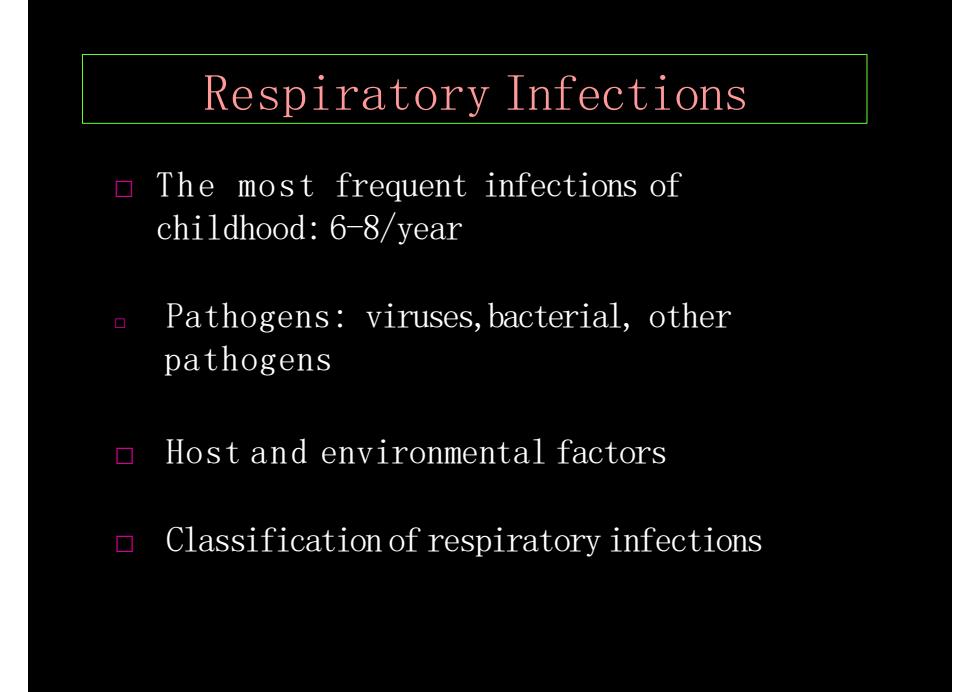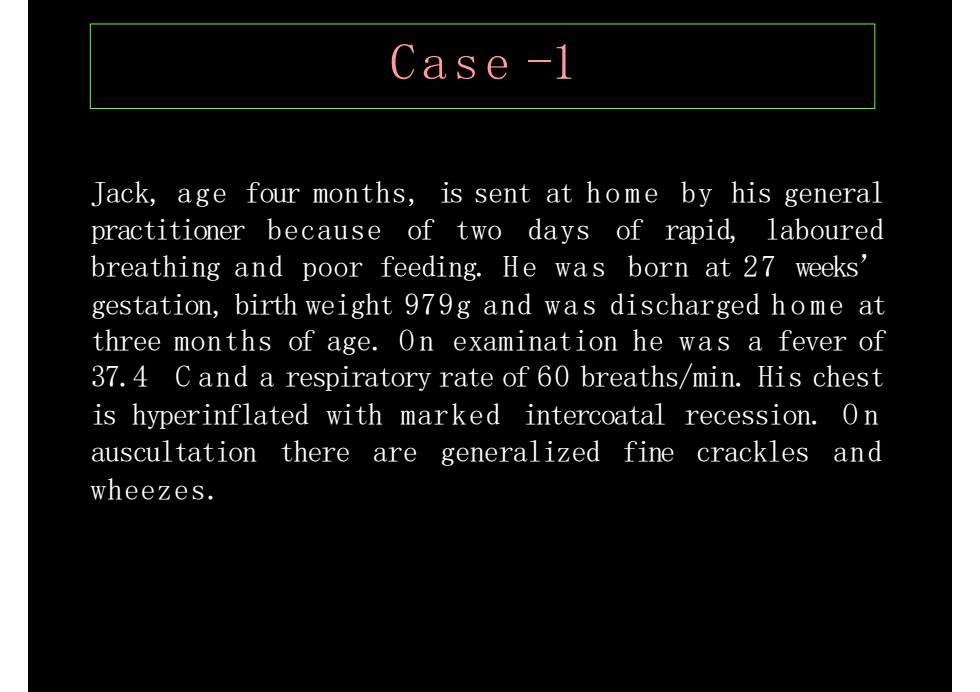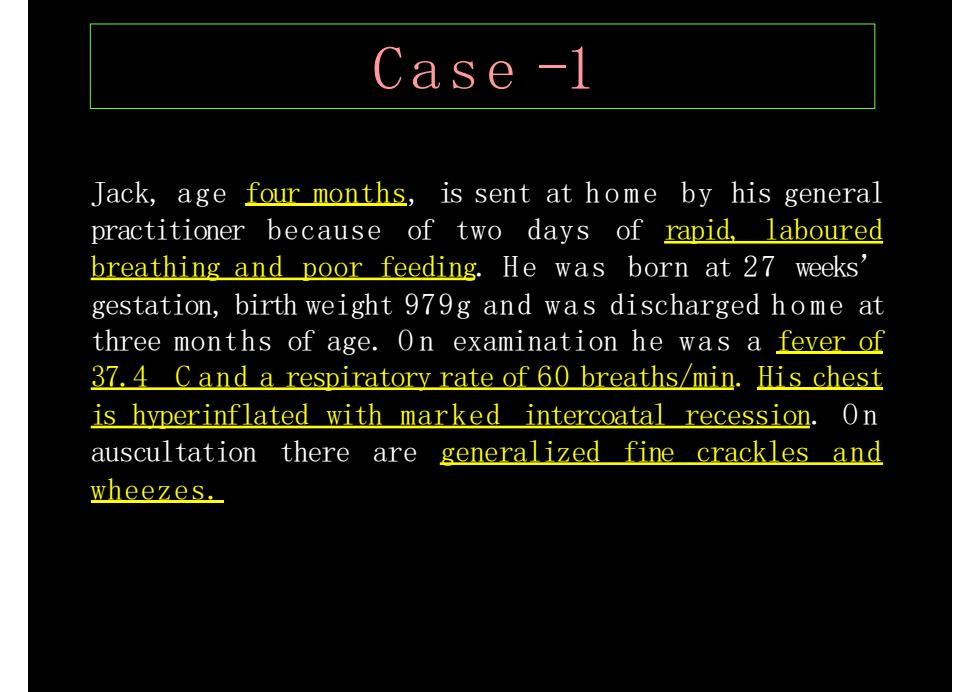
RespiratoryInfectionsThe most frequent infections ofchildhood: 6-8/yearPathogens: viruses, bacterial, otherpathogensHost and environmental factorsClassification of respiratory infections
Respiratory Infections □ The most frequent infections of childhood: 6-8/year □ Pathogens: viruses,bacterial, other pathogens □ Host and environmental factors □ Classification of respiratory infections

ClassificationofRespiratoryInfectionsAccording to the level of the respiratory treemost involved:Upper respiratory tract infectionLower respiratory tract infection-PharynxNasal CaEpiglottisFrachLarynxRight LungBronchusLettLungBronchPlelDiaphragm86dAe
Classification of Respiratory Infections According to the level of the respiratory tree most involved: □ Upper respiratory tract infection □ Lower respiratory tract infection

Case-lJack, age four months, is sent at home by his generalpractitioner because of two days of rapid, labouredbreathing and poor feeding. He was born at 27 weeksgestation, birth weight 979g and was discharged home atthree months of age. On examination he was a fever of37.4 C and a respiratory rate of 60 breaths/min. His chestis hyperinflated with marked intercoatal recession. Onauscultation there are generalized fine crackles andwheezes
Case -1 Jack, age four months, is sent at home by his general practitioner because of two days of rapid, laboured breathing and poor feeding. H e was born at 27 weeks’ gestation, birth weight 979g and was discharged home at three months of age. O n examination he was a fever of 37.4 C and a respiratory rate of 60 breaths/min. His chest is hyperinflated with marked intercoatal recession. O n auscultation there are generalized fine crackles and wheezes

QuestionDo you have any comments or what doyou conclude anything fromthiscase?
Qu e stion Do you have any comments or what d o you conclude anything from this case?

Case -lJack, age four months, is sent at home by his generalpractitioner because of two days of rapid. labouredbreathing and poor feeding. He was born at 27 weeksgestation, birth weight 979g and was discharged home atthree months of age. On examination he was a fever of37. 4 C and a respiratory rate of 60 breaths/min. His chestis hyperinflated with marked intercoatal recession. Ongeneralized fine crackles andauscultation there arewheezes
Case -1 Jack, age four months, is sent at home by his general practitioner because of two days of rapid, laboured breathing and poor feeding. H e was born at 27 weeks’ gestation, birth weight 979g and was discharged home at three months of age. O n examination he was a fever of 37.4 C and a respiratory rate of 60 breaths/min. His chest is hyperinflated with marked intercoatal recession. O n auscultation there are generalized fine crackles and wheezes